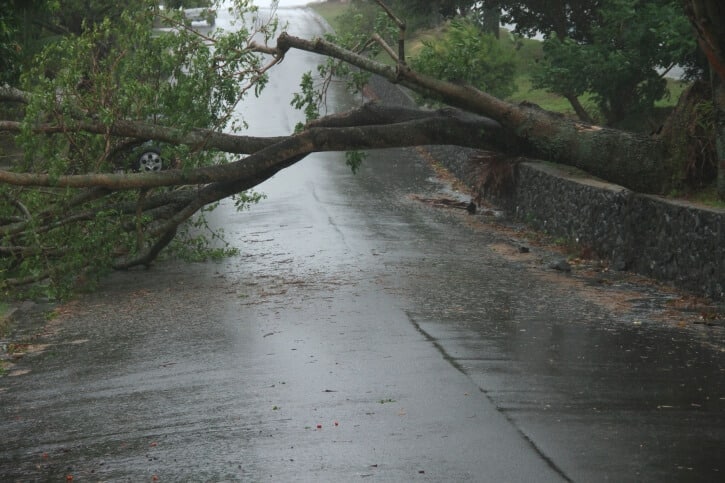
Modern commercial roofs are designed and built to stand up to the elements. But in some parts of America where severe wind is more common, building owners have to pay special attention to their roof’s durability. Heavy winds can cause a myriad of issues: uplift problems, projectile damage, blown-off metal, or even full tear-offs. It is vital for building owners to know that their roof is built to withstand the weather patterns of its local area, and it is in the owner’s best interest to know what is covered under their warranty and what is not.
Construction and Location: The Biggest Factors in Wind Tolerance
Should building owners be worried about wind damaging their roof? It often depends on the building’s location and how it is constructed.
Tornadoes and hurricanes can obliterate entire structures. If your building is located in an area where these storms are likely, a well-designed, properly installed roof system is your best asset. Not only will a well-designed roof stand up better to extreme weather, but without it, the building will be much harder to insure.
If a building experiences regular storms, proper design is imperative. There are three elements in particular to look out for:
- Edge metal: Wind attacks the perimeter of a building and the edges of a roof first and most aggressively. Proper metal installation and termination can mean the difference between roof damage and just another storm.
- Ballasted roofs: Even average storms and nominal debris can damage ballasted roofs, and surrounding buildings can find themselves at risk of damage from flying ballast and debris from adjoining roof systems.
- Roof attachment method: There are several methods for attaching a roof system:
- For fully adhered roofs, the correct weather conditions, timing, and temperature of the roof adhesive application is crucial, as this will determine the roof’s adhesion and ability to withstand high winds and gusts.
- If the roof is mechanically attached, there is a direct correlation between the number and spacing of the fasteners and wind uplift rating. Most manufacturers will specify a membrane-fastening pattern that will determine the roof membrane’s ability to withstand wind uplift.
Warranties Are Not Insurance — Know the Difference!
Warranties generally cover roofs for wind speeds up to either 55 or 72 mph. It is recommended that building owners request a 72 mph wind warranty — they’ll be covered against damage from higher winds, and the improved protection comes at a minimal price increase. But that doesn’t mean that the warranty covers any and all damage resulting from wind that is within the warrantied speed.
Building owners should discuss with their roofer the best type of roof construction in relation to the level of wind that is common in their geographical area. It is important that the building owner understand the wind warranty for their roof location. Regular inspections can reveal potential roof issues that may be susceptible to wind damage.
It is crucial that they understand exactly what their warranty does and does not cover, and that building owners remember that regular inspections can reveal potential problems.
